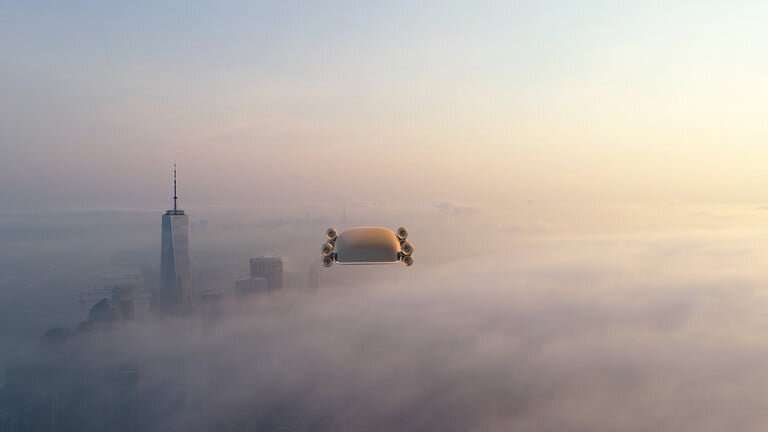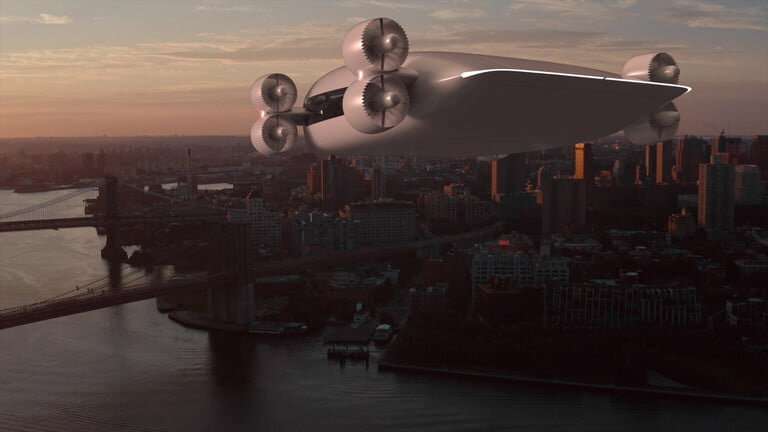Inspired by the packed to the brim trains from New Jersey to New York, Braeden Kelekona came up with the idea for a 40-seat drone bus. This concept would aim to keep passenger numbers reasonable in order to accommodate desired social distancing in a post-COVID-19 world.
The vehicle in question would come to life as an aircraft resembling a futuristic blimp or flying saucer and capable of a lifting body electric vertical takeoff and landing (eVTOL). Its currently 3D-printed airframe would rise from the ground using eight thrust-vectoring fans with various pitch propellers. These fans will operate every stage of the vehicle’s flight, including vertical takeoff, forward flight and landing. Kelekona has confirmed that he hopes this aircraft will compete with and possibly even replace public transportation.
Also promising to compete with the likes of Uber Elevate air taxi to release in 2023, Kelekona’s larger cargo capacity of 40 persons would present an advantage over Uber’s limit of four passengers and a pilot. In this way, Kelekona’s vehicle would offer to carry 10,000 pounds of cargo for the price of an Amtrak ticket. Kelekona explains how, given the relatively small airspace in a busy metropolis like New York City, the ability to transport as many people at a time as possible makes the most sense.
To begin, Kelekona plans to track a first route from Manhattan to the Hamptons, a flight of 30 minutes that costs $85. Future routes are set to include Boston to New York, New York to Washington, D.C. and Los Angeles to San Francisco.
Fortunately, Kelekona has also confirmed that the company possesses the significant amount of battery power required to sustain such flights. Indeed, he compares the battery capacity to that seen in Model S, Model 3 Tesla batteries. To that end, the company is developing a battery pack specifically for flight that will run on 3.6 megawatt hours of capacity. This level of energy would prove enough to power hundreds or even thousands of households.
Still, Kelekona acknowledges that his startup has yet to actually build one of these massive transit drones. For now, all of the plans have been constructed using computer simulation. As for a timeline, Kelekona projects their airbus to take flight by 2022 for cargo and in 2024 for human passengers, assuming the aircraft passes the required Federal Aviation Administration certification process. For a vehicle that will operate via battery technology and electric motors, this process might prove unique.

Innovative batteries put flying cars on the horizon
More information:
Dormehl, L. “Forget Drone Taxis. This Startup Is Building a Drone Bus.” Digital Trends, Digital Trends, 7 June 2021, www.digitaltrends.com/features … ying-drone-bus-vtol/.
www.kelekona.com/
2021 Science X Network
Citation:
Startup Kelekona develops a 40-seat drone bus (2021, June 11)
retrieved 11 June 2021
from https://techxplore.com/news/2021-06-startup-kelekona-seat-drone-bus.html
This document is subject to copyright. Apart from any fair dealing for the purpose of private study or research, no
part may be reproduced without the written permission. The content is provided for information purposes only.



